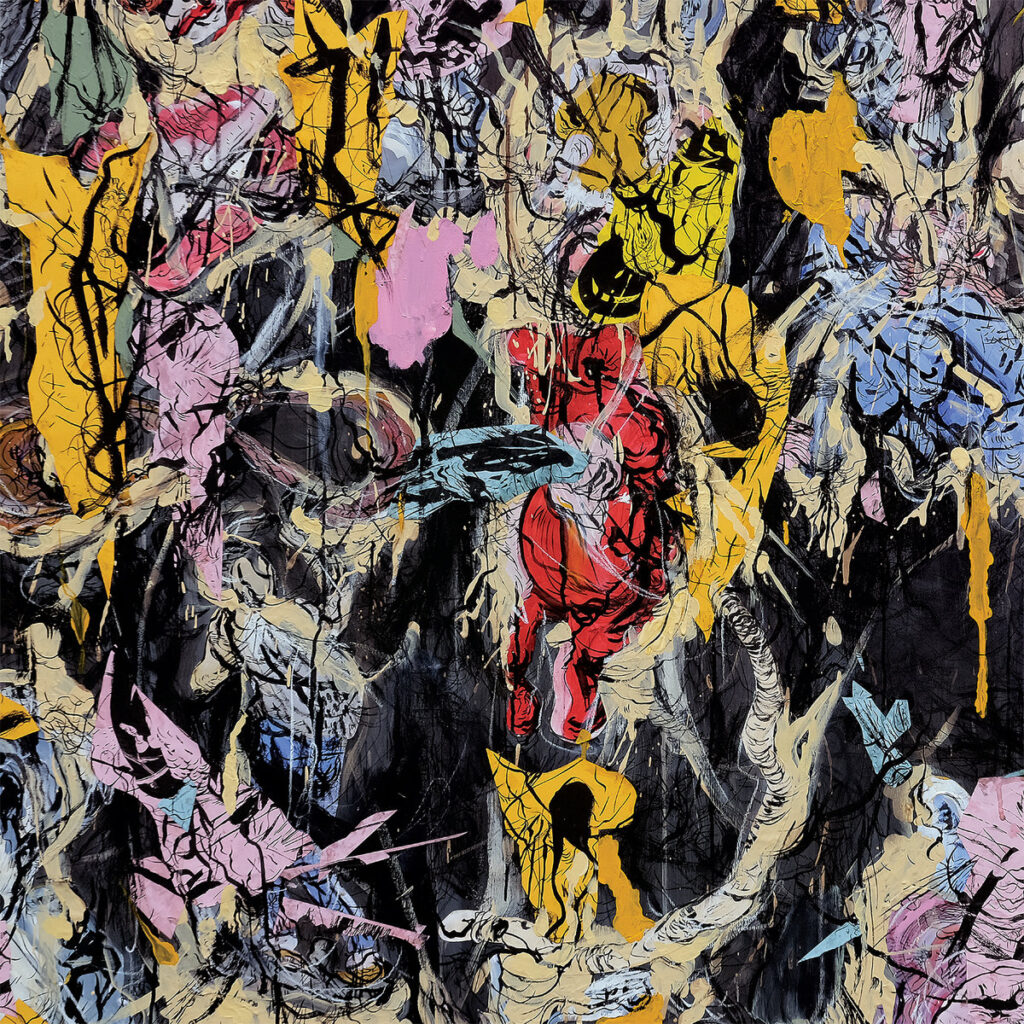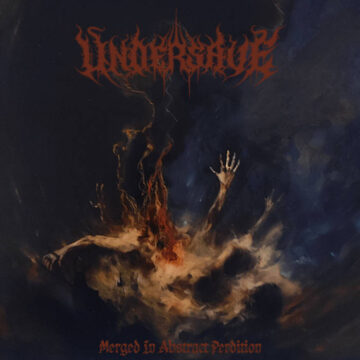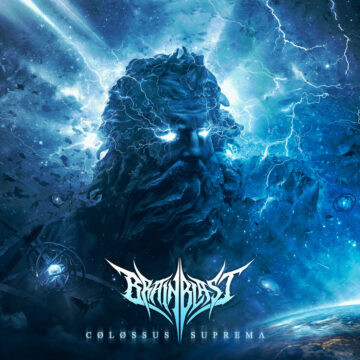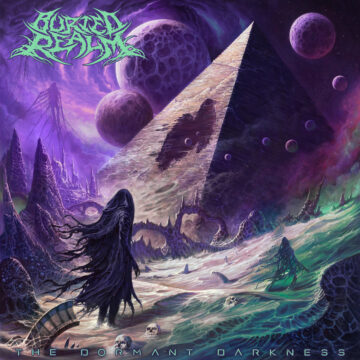Review: Sumac, Moor Mother – The Film

Style: Atmospheric sludge metal, avant-garde metal, poetry (Spoken word, harsh vocals)
Recommended for fans of: Isis, Neurosis, Chat Pile, Thou, Mizmor
Country: Canada / Maryland, United States
Release date: 25 April 2025
‘We didn’t demand more from a democracy of monsters.’
The grimy post-apocalyptic imagery conjured by post-rock and avant-garde artists like Godspeed You! Black Emperor and Ashenspire are sharp critiques of the hostile world crafted by modern society. Canadian sludge metallers Sumac explored similar themes and soundscapes on their 2024 opus, The Healer, but with a balmy twist: Aaron Turner and co. find beauty and catharsis among the aftermath, exploring healing as a non-linear process in a series of cacophonous, improvised sludge metal pieces. On their latest release, The Film, Sumac join forces with industrial hip-hop artist Moor Mother, crunching the scope of The Healer’s pieces down to relatively bite-sized movements and giving them structure through spoken word. How does The Film play out?
The atonal warbling of Sumac’s guitars adorn the crooked canvas of “Scene 1”. Seas of crumbling gray buildings stretch beyond the horizon, and the mind desperately claws for tonality and rhythm among the scraping dissonance of Aaron Turner’s guitarwork. Figures and forms almost coalesce in the coarse and mangled chords; by design, they’re just a bit too out of reach to fully form into a cogent shape. The listener is left to sit in anxious ambiguity as a consequence. Then, a voice materializes from the rubble, a rudder to a vessel with no form. First distorted, then yanked into clarity, it calls out:
‘I want my breath back.’
Throughout “Scene 1”, Moor Mother sneers in the face of an invasive hegemony through spoken word poetry, unearthing a siren call against the Colonialist tendrils that push into the scree’s every crevice. We’re told over and over that the kudzu has died, but she insists that anyone with a keen eye can see how its roots continue to spread and how its vines choke out the grove’s most vulnerable.
‘That’s why we don’t believe. We don’t believe. We don’t believe. We. Don’t. Believe. WE—DON’T—BELIEVE.’
Among the swirling cataclysm laid down by Sumac, Moor Mother exudes both a razor-sharp focus in spoken-word verses and an assertive bluntness in her punctuated litany. By way of hypnagogic paranoia in “Scene 2: The Run”, war-torn landscapes in “Scene 5: Breathing Fire”, and frustrated inner conflict in “Camera”, Moor Mother anchors The Film, cleverly intertwining her poetry with amorphous and wailing instrumentation. Calls of ‘So long they’ve been hating, waiting, debating how to keep you enslaved / Better lose your mind, lose your mind, lose your mind, lose your mind / Run away, better lose your mind / Hurt off, dust off, hate off, change off, devil off / Better run and lose your mind’ on “Scene 4” exemplify The Film’s percussive lambasts, branding themselves onto the surface of your mind with each repetition and leaving behind no ambiguity in her snarling conviction.
Though some moments come across a bit referential for my tastes (e.g., a reference to the Whip and Nae Nae on “Scene 3”, and a callout to Blue’s Clues on “Scene 5: Breathing Fire”), Moor Mother’s approach is overwhelmingly effective as a whole. The sentiments on “Camera”, for example, are masterfully executed, cleaved in two as tension is forged between opposing forces. On one hand, her lyricism portrays a strong desire to be cognizant of injustices and engage in activism against them; on the other, a pang to ‘stick one’s head in the sand’ emerges, as the deluge of nightmares constantly surfaced is simply too much for a single person to bear. The effect is heightened when Moor Mother’s voice takes on an unearthly form, malleated into a down-pitched, ominous panopticon:
‘Let the camera do the talking. Don’t look away. Don’t look away. Don’t. Look. Away. Let the camera do the talking. Get away, get away, get away, get away, get away, get away.’
Moments of clarity and conventional song structure occasionally bubble to The Film’s surface. “The Truth is Out There” utilizes consonance and pleasant textures, acting as a small palate cleanser before The Film’s mammoth closer. Even in its more melodic passages, though, Sumac opt to use oblique, eccentric chord choices to keep the listener from getting too comfortable in their sense of levity. “Scene 3” features a relatively standard post-metal song structure, slowly building into a massive apex and crushing the listener under pounding drumwork and frantic reiteration of ‘In the way of our dreams…’ by its end.
“Scene 2: The Run”, in contrast, teeters between the more constructed and the more nebulous: the thrumming, pulsating bass across its runtime acts as an oscillating searchlight, keeping its sparse soundscape grounded. Led by Moor Mother’s poetry, one has a brief window to dive between concrete crags and reach shelter between the rumbling flashes. Intensity ebbs and flows, exploring dissonant tremolos and weighty dirges but each time returning to the searchlight’s bassy thrum. The track’s closing moments unveil a climax of explosive drum grooves, hypnotic, swirling guitar chords, and ghoulish howls. The crumbled remains coalesce into a tumbling, horrific golem, shattering off pieces of itself as it thrashes about.
‘Memories. Looping. Dead. Sky is. Falling. Falling. Blood. Red. Blood. Blood. Red. Blood.’
“Scene 5: Breathing Fire” is a consummation of The Film’s elements, a Chekhov’s Arsenal of ideas and techniques introduced earlier in its runtime. Anchored by Moor Mother’s poetry, the track melts and morphs between stillness and intensity, smoothness and texture, consonance and dissonance; its introductory moments beget premonition of something more chaotic, more violent, and more powerful than anything encountered up to this point.
‘War breath always breathes—fire. Time’s in neglect, and I’ll see you on the other side. I’ll see you on the other side.’
The instrumentals bear a laserlike focus: whereas before the rhythms lumbered in dissonant chaos, they now punch the back of your head with militaristic precision.
‘I need a moment. I need a moment. Sorting through snakes and serpents. I need an omen.’
The patterns aren’t quite discernible at first glance, using basic rhythmic building blocks in spectacularly odd meter. Tension builds around drums that congeal through kinetic cymbal splashes.
‘We’re in the boxing rings and fighting for our lives. Fighting for our lives. FIGHTING. FOR. OUR. LIVES.’
An instrumental bomb drops. Sumac settle in to a bulldozing groove while Moor Mother summons an apocalyptic fury, snarling overtop magnitude ten forces.
‘I PRAY THE TIDES GO. I PRAY THE TIDES GO. I PRAY THE TIDES GO THE WAY OF THE WOLVES. THE WAY OF THE WOLVES. AND OUT COME THE WOLVES. AND OUT COME THE WOLVES. TAKE WARNING. TAKE WARNING. TAKE CAUTION, TAKE. OFF. RUNNING. TAKE OFF RUNNING. TAKE OFF RUNNING. TAKE—OFF—’
The gravity of the instrumentals outmatches their stability, and “Scene 5” begins to deconstruct. A familiar chaos creeps back in as guitars melt into buzzing warbles and the frantic jingling of chimes fill every inch of negative space. A wailing, trembling guitar solo attempts to push back against the bubbling waves of bass, but the exertion of the two is too much, and the entire piece collapses. Little is left other than guitar scrapes, squeaks, and cresting cymbal washes.
‘Basic instructions before leaving Earth. Basic instructions before leaving Earth…’
For the first time during The Film, an unabashedly tranquil space is broached. Guitars amble around plaintive chords, and drums gently lilt along. The final stretch of “Scene 5” exudes catharsis, releasing a tension that’s been building since the record’s first moments and giving the listener space to rest and reflect.
‘I. Want. My. Change. But what do we return to? But what do we return to? What do we return to?’
In The Film’s calm aftermath, only pebbles and ash remain; in this dust is the space for something new to grow. The Film is at the same time heartbreakingly concrete and nightmarishly surrealist, juxtaposing dissonant sludgy improvisation against a spellbinding voice that confidently leads the traveler through a forsaken barrens. Despite a spate of horrific injustices and efforts from every corner to oppress, intimidate, and silence marginalized groups, we must continue to strike away at what makes us human, and at the same time fight to make the world something more than a place not designed for us.
Recommended tracks: Scene 5: Breathing Fire, Camera, Scene 2: The Run
You may also like: BÅKÜ, Ashenspire, Five the Hierophant, Lathe
Final verdict: 9/10
Related links (Sumac): Bandcamp | Spotify | Facebook | Instagram | Metal-Archives
Related links (Moor Mother): Bandcamp | Spotify | Facebook | Instagram
Label – Thrill Jockey Records: Bandcamp | Facebook | Official Website
Sumac is:
– Aaron Turner (guitars, vocals)
– Nick Yacyshyn (drums, percussion, synths)
– Brian Cook (bass)
Moor Mother is:
– Camae Ayewa (vocals, synths)
With guests:
– Candice Hoyes (vocals, track 3)
– Kyle Kidd (vocals, track 4)
– Sovei (vocals, track 5)



4 Comments
Review: Völur, Cares - Breathless Spirit - The Progressive Subway · August 16, 2025 at 14:00
[…] Windborne Sorcery I, HearthYou may also like: Wyatt E., Alora Crucible, The Ruins of Beverast, Sumac, Aerial RuinFinal verdict: […]
Review: Kayo Dot - Every Rock, Every Half-Truth Under Reason - The Progressive Subway · August 8, 2025 at 14:54
[…] Drone, ambient, post-rock (Mixed vocals)Recommended for fans of: Sumac, Sunn O))), SwansCountry: Connecticut, United StatesRelease date: 1 August […]
Our April 2025 Albums of the Month! - The Progressive Subway · June 7, 2025 at 17:36
[…] Recommended tracks: Scene 2: The Run, Camera, Scene 5: Breathing FireRelated links: Bandcamp | Spotify | original review […]
Review: Shearling - Motherfucker, I Am Both: “Amen” and “Hallelujah”... - The Progressive Subway · June 5, 2025 at 03:49
[…] tracks: it’s a one track album…You may also like: Cime, Natural Snow Buildings, Ken Mode, Sumac & Moor MotherFinal verdict: […]